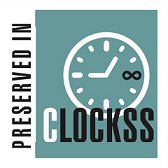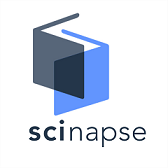Visual Comfort and Discomfort in Public Boarding Secondary Schools in Nairobi City County, Kenya
Abstract
Indoor light quality is the intensity and amount of illumination of interior spaces. Technological developments have led to the utilisation of artificial natural light. Illumination is crucial in the visibility of tasks. Quality of light can influence the visual comfort and ocular health of the students. Although Kenya lacks lighting standards for schools, ISO and CIE provide international guidelines on optimal illumination for various facilities. This study was conducted on public boarding secondary schools in Nairobi City County to assess the visual comfort or discomfort of students in classrooms. The study utilised a cross-sectional descriptive study design. Four hundred twenty-three students were randomly sampled from 8 schools. Illumination levels were measured in 38 classrooms using a calibrated Benetech GM1010 light metre and compared to levels recommended by ISO and CIE. A self-administered semi-structured questionnaire was used to collect data on students’ visual comfort or discomfort. Data was analysed using SPSS version 23. Descriptive data were analysed using frequencies, while inferential data were analysed using chi-square. The study established that 15% of the respondents experience visual comfort during the day, 13.5% at night, and 12.7% both day and night. Fourteen classrooms achieved the recommended illumination level at 7:30, 20 at 13:00 hours, and 10 at 18:00 hours. Recorded levels ranged from 56.71 lux to 1289.93 lux. The study found a statistically significant association between visual comfort and factors such as existing eye problems, presence of blinds or curtains, number of windows, presence of whiteboards, classroom orientation and student sitting positions. The study recommends that public secondary schools need to ensure quality indoor illumination in their facilities to enhance the visual comfort of students in learning facilities.
Downloads
References
Aloyo, P. (2015). The Relationship Between Physical Environment and Academic Achievement in Public Secondary Schools in Nairobi City, Kenya. PhD. Kenyatta University.
Chiou, Y.-S., Saputro, S., & Sari, D. P. (2020, May 11). Visual Comfort in Modern University Classrooms. Sustainability, 12. doi:10.3390/su12093930
European Committee for Standardisation. (2011). Light and lighting - Lighting of workplaces - Part 1: Indoor workplaces. Brussels: European Committee for Standardisation.
Gilavand, A., Gilavand, M., & Gilavand, S. (2016). Investigating the Impact of Lighting Educational Spaces on Learning and Academic Achievement of Elementary Students. International Journal of Pediatrics, 4(5), 1819-1828. doi:10.22038/ijp.2016.6768
ISO & CIE. (2002, May 15). Lighting of indoor workplaces. International Standards. ISO & CIE. Retrieved from https://www.academia.edu/38216388/ISO_CIE_8995_1_2002_E_Character_PDF_document?auto=download
Mugenda, O., & Mugenda, A. (2003). Research Methods: Quantitative and Qualitative Approaches. Nairobi: Act Press.
Mujeebu, M. A. (2019). Introductory Chapter: Indoor Environmental Quality. IntechOpen. doi:10.5772/intechopen.83612
Negiloni, K., Ramani, K. K., & Sudhir, R. R. (2019). Environmental Factors in School Classrooms: How They Influence Visual Task Demand on Children. PLoS ONE, 14(1). Retrieved from http://search.ebscohost.com/login.aspx?direct=true&db=edb&AN=134061518&site=eds-live
Ram, M. S., & Bhardwaj, R. (2018). Effect of Different Illumination Sources on Reading and Visual Performance. Journal of Ophthalmic and Vision Research, 13(1), 44-49. Retrieved from http://search.ebscohost.com/login.aspx?direct=true&db=edsgao&AN=edsgcl.523649591&site=eds-live
Samani, S. A., & Samani, S. A. (2012). The Impact of Indoor Lighting on Students’ Learning Performance in Learning Environments: A Knowledge Internalisation Perspective. International Journal of Business and Social Science, 3(24), 127-136. Retrieved from http://www.ijbssnet.com/journals/Vol_3_No_24_Special_Issue_December_2012/14.pdf
Tureková, I., Lukáčová, D., & Bánesz, G. (2018, November). Quality Assessment of the University Classroom Lighting - A Case Study. TEM Journal, 7(4), 829-836. doi:10.18421/TEM74-21
U.S. Department of Energy. (2014, 05 01). Lighting for Health: LEDs in the New Age of Illumination. Retrieved from Office of Scientific and Technical Information: https://www.osti.gov/biblio/1221107-lighting-health-leds-new-age-illumination
UNESCO. (2013, June). Education For All National EFA 2015 Review Guidelines. Retrieved from UNESCO Digital Library: https://unesdoc.unesco.org/ark:/48223/pf0000222445
Winterbottom, M., & Wilkins, A. (2009). Lighting and discomfort in the classroom. Journal of Environmental Psychology, 63–75.
Copyright (c) 2023 Cynthia Vugudza Magero, Jackim Nyamari, PhD, Redempta Mutisya, PhD

This work is licensed under a Creative Commons Attribution 4.0 International License.




























